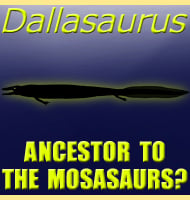Carsosaurus
In Depth Carsosaurus was large for and aigialosaurid, but the claim to fame for this reptile was the 2001 discovery of four juveniles inside the body of an adult. The high degree of preservation in the juveniles as well as their location strongly suggests that these juveniles were actually offspring waiting to be born, and … Read more
